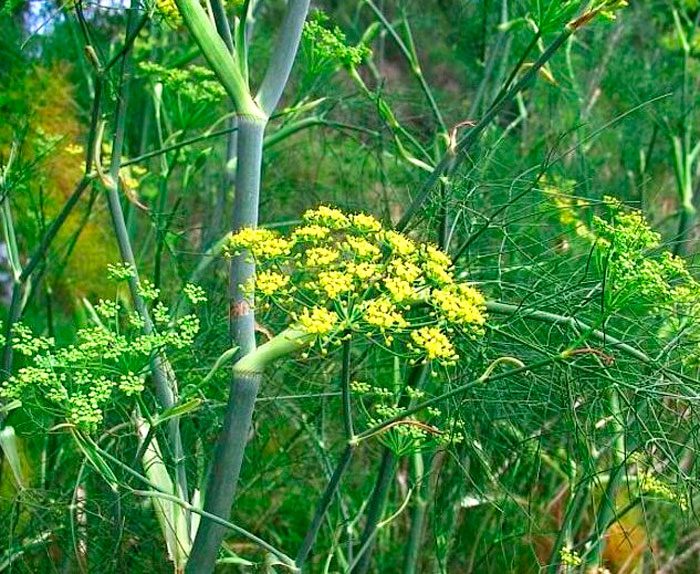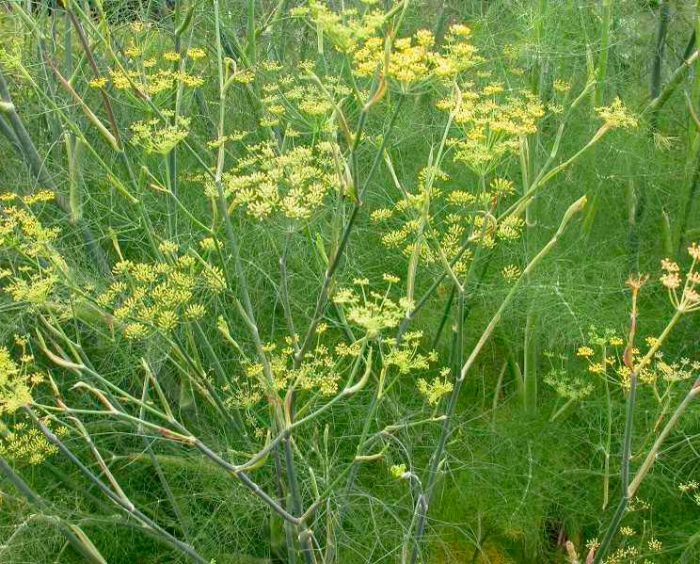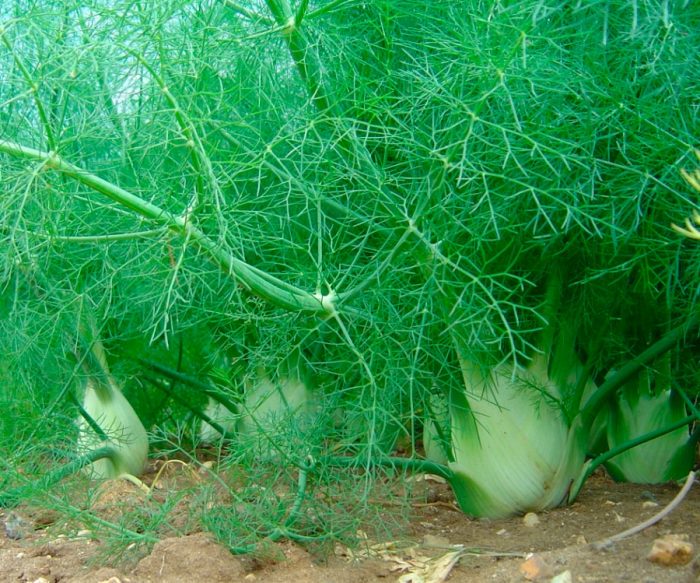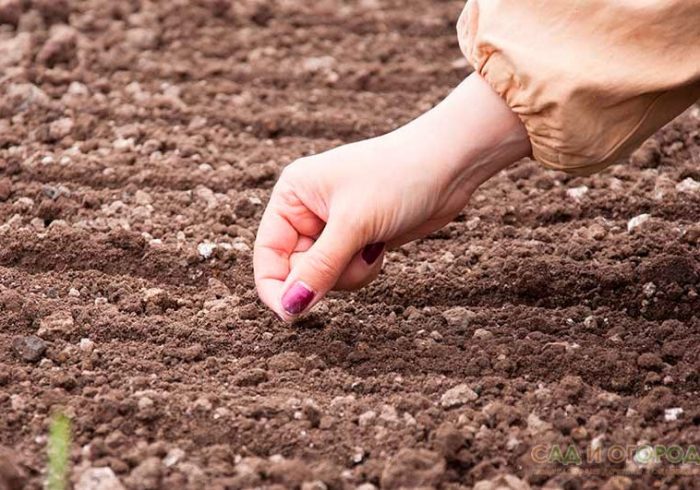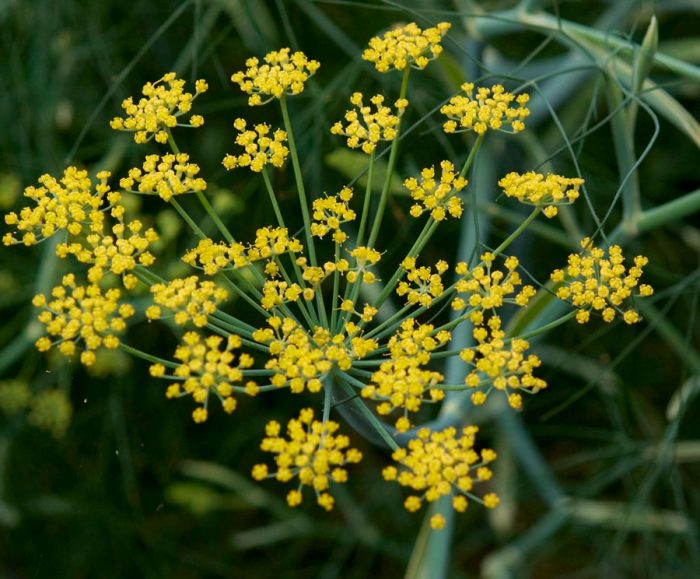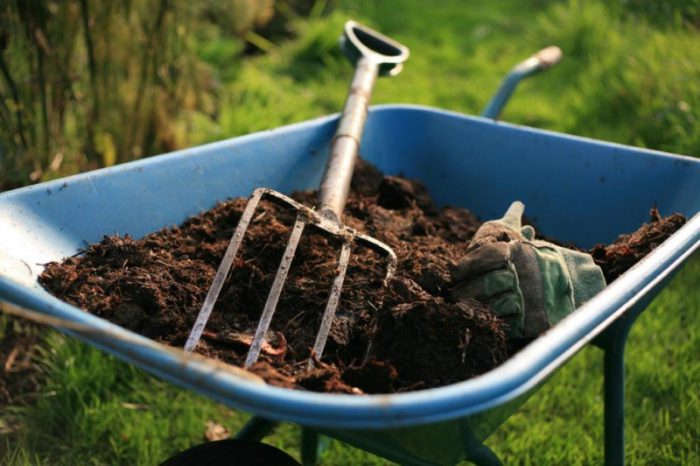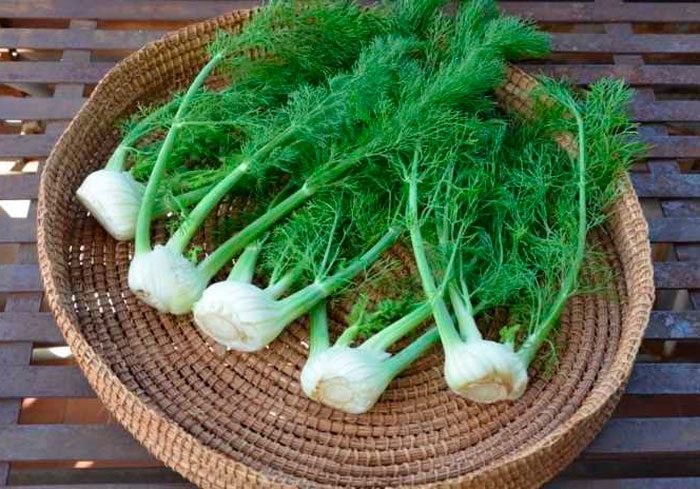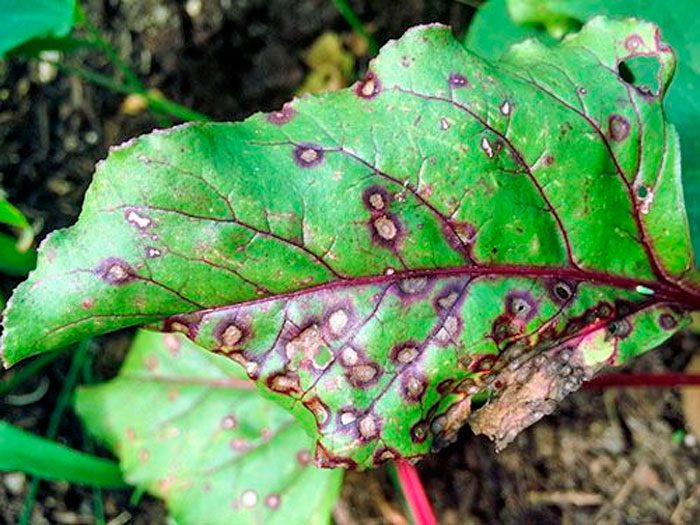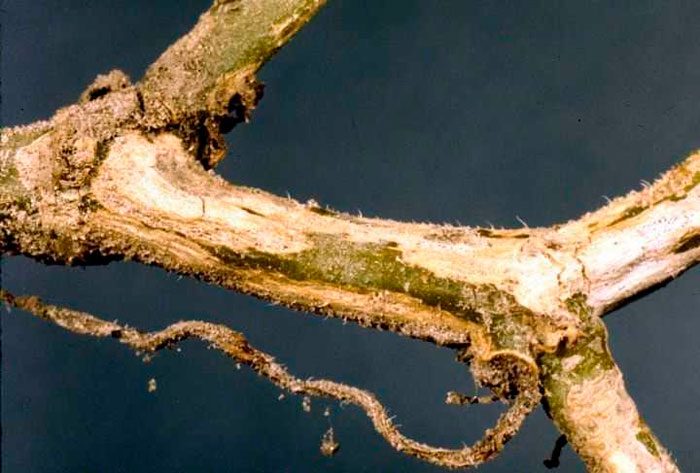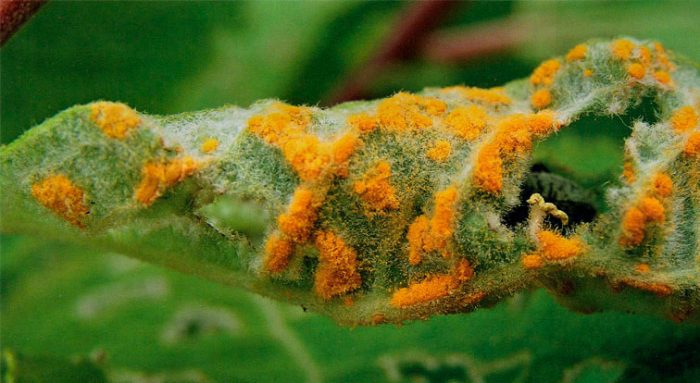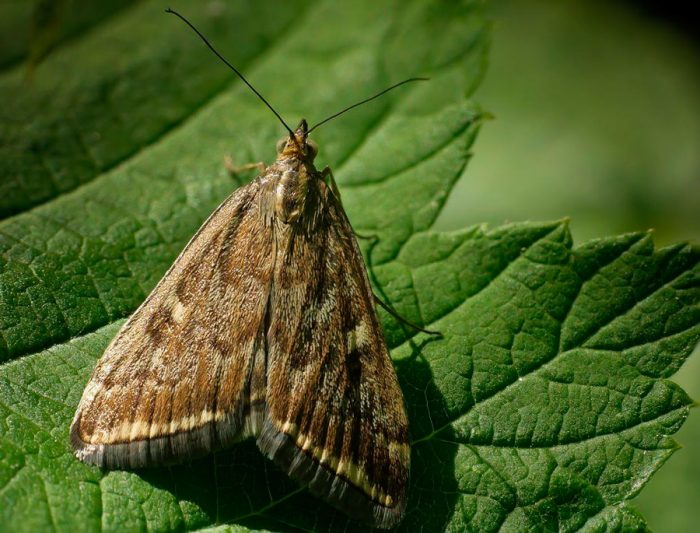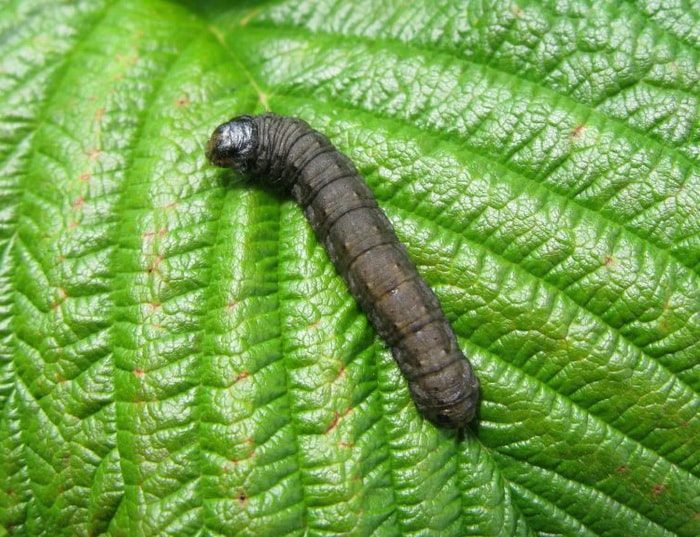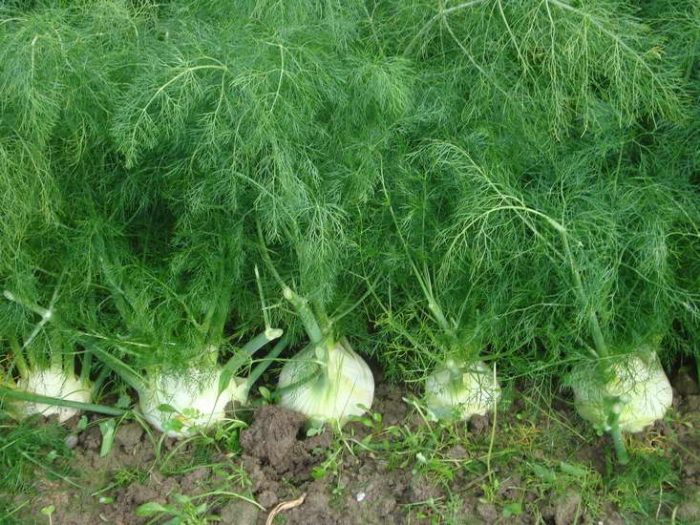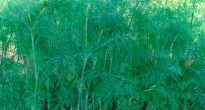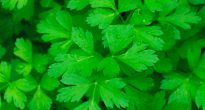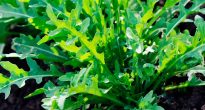The herbaceous plant common fennel (Foeniculum vulgare) is considered a species of the genus Fennel of the Umbrella family. Among the people, it is also called Voloshsky dill, or pharmacy. Under natural conditions, fennel can be found in Western Europe (France, Spain, Italy, England and Portugal), North Africa (Libya, Algeria, Egypt, Morocco and Tunisia) and Southeast Europe (Bulgaria, the countries of the former Yugoslavia , Greece and Albania). In addition, such a culture can be found in Central, North and South America, Central and West Asia, as well as New Zealand. It prefers to grow in ditches, on rocky slopes and in weedy areas.
Such a culture is grown in a large number of countries. The first mentions of fennel were found in the herbalists of Ancient India, which were written about 5 thousand years ago. Such a plant was also known in Ancient China, it was used there for cosmetic and culinary purposes, it was also known about it in Ancient Egypt, it was believed that, in addition to its medicinal and taste properties, it has power over evil spirits. The ancient Saxons also believed that such a plant has mystical properties; they used bundles of such grass to protect their homes from witchcraft. The Greeks used fennel as a choleretic, diuretic and abortifacient, and was also used to get rid of fleas. In the writings of Dioscorides, Avicenna, Hippocrates and Pliny, mentions of such a plant are found. In the Middle Ages, this culture began to be cultivated throughout Europe and by the Czech physician Mattiol, who served at the court of Archduke Ferdinand, a treatise called "The Power and Effect of Fennel" was dedicated. In the 18th century, the pharmacist Stephens created a medicine for kidney and stomach diseases on the basis of fennel, which is highly effective, the English parliament decided to pay him decent compensation for the fact that this recipe was made public. This plant is used as a spice in the national cuisines of a large number of countries, including both Asian and European.
Content
Brief description of cultivation
- Landing... Use podzimny sowing seeds in open soil, which is carried out in October. You can also sow them in early spring (in April), in areas with a warm climate, sowing dry seeds on a garden bed is carried out in July or August.
- Illumination... Needs a lot of sunlight.
- Priming... The soil should be light loamy or sandy loam.
- Watering... On average, the bushes are watered once every 5 days, while 1 to 1.5 buckets of water are taken per 1 square meter of the garden. It is necessary to increase the number of waterings during prolonged drought or if fennel grows on light soil.
- Fertilizer... It is recommended to feed this culture with a solution of chicken manure (1:20) or mullein (1:10), and for this use an infusion of herbs. During the season, the bushes need to be fed a couple of times: when they are thinned out and after the beginning of the formation of peduncles.
- Hilling... You only need to huddle vegetable varieties twice or three times during the season to a height of 30 to 70 mm.
- Reproduction... The seed method, and the most often used is vegetative propagation (division of the rhizome).
- Harmful insects... Wireworms, May beetle larvae, scoop caterpillars and meadow moths.
- Diseases... Cercosporosis, root and stem rot or rust.
- Properties... This herb has a mild disinfectant, antispasmodic and mild diuretic effect.
Features of fennel
Fennel is cultivated as an annual, biennial or perennial. The fusiform root is fleshy and wrinkled; it branches strongly in the upper part. The color of all aerial parts of the plant is green with a pale blue bloom. The height of the strongly branching rounded straight stem varies from 0.9 to 2 m. The cirrus alternately located leaf plates are four or three times dissected, the lower foliage has petioles, and the upper one is sessile on the sheath of a narrow-oblong shape, the length of which is 30-50 mm, to the apex it is expanded ... Double umbellate inflorescences reach 3-15 centimeters across, they consist of yellow flowers. Bushes bloom in July – August. The fruit is a bare, oblong-shaped, brown-green, glabrous fruit, its taste is sweet, the length is from 0.5 to 1 cm, and the width is from 0.2 to 0.3 cm.The fruits fall into 2 parts, their ripening is observed in September ...
Growing fennel from seeds
Sowing in the ground
For propagation of fennel, the seed method and the method of dividing the rhizome are used. The seed remains viable for 2-3 years. Used as a podzimny sowing of seeds, so they are sown at the beginning of the spring period. In warm regions, dry seed is used to grow fennel as a perennial, which is sown in open soil in July or August. When purchasing the seeds of this culture, it should be borne in mind that there are 2 types of seed: the first variety is used to obtain fragrant greens, and the second is a vegetable, when grown, greens are obtained, as well as heads of cabbage with high taste.
For sowing this crop, it is recommended to choose those areas where snow accumulation was observed in winter. Fennel is thermophilic and therefore grows very poorly in shaded areas. Light loamy or sandy loam soils are well suited for cultivation. Good predecessors for such a plant are row and winter crops, as well as herbaceous annuals. Spinach, peppers, beans, tomatoes, beans and cumin should not be grown in the vicinity of fennel, because it inhibits the growth of such plants. Experts advise growing this crop next to cabbage and cucumbers, as it scares away such a common pest as aphids with its aroma.
If sowing is carried out in the spring, then the preparation of the site should be done in the autumn. To do this, liming of acidic soil is carried out, and after at least 15 days, 2 tbsp is introduced into it under deep digging. l. superphosphate, 1 bucket of compost or humus and 2 liters of stale sawdust per 1 square meter of land.In spring, before proceeding with sowing seeds, the surface of the site is loosened and leveled. For sowing before winter, it is recommended to choose those areas in the soil of which fertilizers were applied for previous crops. It is not necessary to apply fertilizer to the soil specifically before planting this plant, since it will ripen very slowly because of this.
During sowing, the seed must be buried in the ground by 20 mm, while the row spacing must be at least 0.6 m.If sowing is carried out in early April, then after planting the bed must be watered, and then its surface is covered with a film that is removed only when the first seedlings appear. A week and a half after the emergence of seedlings, they will need thinning, while the distance between the plants of vegetable varieties should be from 20 to 30 centimeters, and between the green seedlings - from 10 to 15 centimeters. In regions with a fairly cold climate, it is recommended to grow fennel through seedlings.
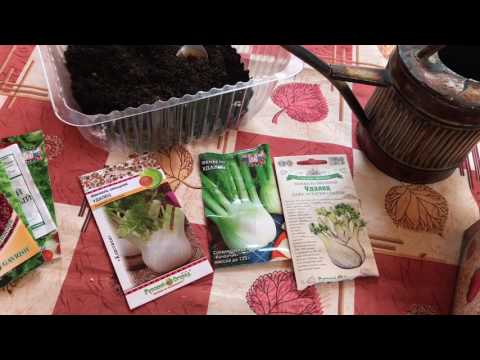

Watch this video on YouTube
Fennel care
It is quite easy to grow this culture on your site. Such a plant should be provided with timely watering, weeding, feeding, it also needs to be protected from diseases and harmful insects, and also loosen the surface of the earth between the rows 3 times during one season. If vegetable varieties are grown, then they need to be spud twice or three times during the growing season to a height of 30 to 70 mm. This is necessary in order to whiten the heads of cabbage, and even after hilling, they become more fleshy and juicy.
How to water
This plant loves water. If it rains regularly in the summer, then on average it will need to be watered 1 time in 5 days, while 1 to 1.5 buckets of water are taken per 1 square meter of the garden. If the crop is grown on light soil, then watering should be more frequent. Particular attention should be paid to watering when growing vegetable varieties, since if they do not have enough water, this will have an extremely negative effect on the quality of the konchaniks, while the bushes themselves can go into the stem. It should also be remembered that with insufficient watering, the bushes begin to launch their roots on the adjacent beds.
When it rains or the fennel is watered, the surface of the earth around the bushes must be loosened without fail. To reduce the number of watering, weeding and loosening, the surface of the garden bed should be covered with a layer of mulch.
Fennel feeding
Fennel responds best to feeding with mullein solution. In order to prepare it, you need to combine water with cow dung in a ratio of 10: 1. You can also use a solution of chicken manure, but in this case, water and organic matter are combined in a ratio of 20: 1. You can also feed this culture with an infusion of herbs. In total, during the growing season, the bushes must be fed 2 times. The first time the garden bed is fertilized immediately after the seedlings are thinned out, and the second - when the formation of flower arrows begins in green varieties, and when growing head varieties, 4 weeks after the first feeding.
Harvesting
Cutting fennel greens is carried out after the height of the bushes is 0.3 m, the fact is that at this time it has the most intense smell. Cut the greens in the early morning, before the dew has dried, or in the evening, when the sun goes down.
It will be possible to start collecting the heads of cabbage after they reach 10 centimeters in diameter. The heads of cabbage need to be cut to the very root, but at the same time, petioles with foliage about 20 centimeters long should remain on them. Cut heads of cabbage should be laid out in a shaded place in the fresh air, they should stay there for some time. Then they cut off all the petioles except one, which is shortened to 10 centimeters, then they are removed for storage. They are stored buried in the sand in a cool place, since they can be stored in the refrigerator for no longer than half a month.
Seed collection
As a rule, the first flowering is observed only in the second year after sowing fennel. And the collection of seeds can be carried out only after the bushes have faded. It will be possible to collect them only when the pale green inflorescences change their color to brownish yellow. Trim them carefully and hang them in a well-ventilated, dry, cool area to dry with newspaper sheets underneath. After the umbrellas are well dry, you will need to shake out the seeds from them onto a leaf. When they are separated from the plant debris, they are scattered into bags made of paper. For storage, they are placed in a dark and dry place.
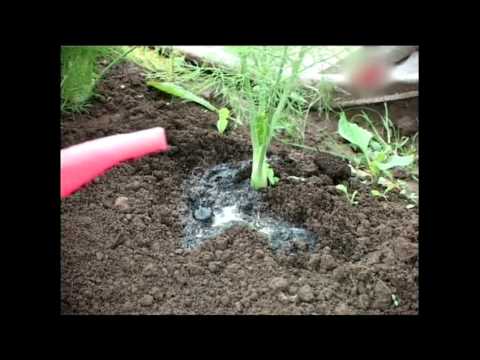

Watch this video on YouTube
Fennel pests and diseases with photos and names
Fennel diseases
Fennel has a fairly high resistance to disease, but still sometimes it suffers from stem or root rot, cercosporosis or rust.
Cercosporosis
If the bush is sick with cercosporosis, angular small specks of yellow color are formed on all its green parts. Over time, the color of the spots becomes darker, they merge with each other. The affected parts of the bush turn yellow and then die off. For the purpose of prevention, the crops should not be allowed to thicken. The affected bushes should be sprayed with a solution of Bordeaux mixture (1%), Kaptan or Kuprozan.
Root rot
Root rot kills fennel. At first, foliage wilting is observed, and then it withers, becomes brown and dies off. If you dig a hole 15 centimeters deep near the bush, you can find blackened roots. The affected plant must be dug up and removed from the site along with the soil that is adjacent to the roots. If the disease was detected at the initial stage of development, then it is recommended to stop watering the fennel, and also spray it with a solution of a fungicidal preparation.
Stem rot
In plants affected by stem rot, shoots and stems are damaged. At first, part of the stem or shoot is rotting, after which it dies off. In some cases, foliage is also affected. As a rule, the plant rots at the level of the soil surface, and also above, while the first symptom of the disease is the appearance of a white bloom, then small brown specks form on the surface of the stem. After signs of this disease are found on the bush, you need to stop watering it, then you need to remove the plaque, and coat the affected areas with a strong solution of manganese potassium, after which the plants are powdered with wood ash.
Rust
If the bush is affected by rust, which is a fungal disease, then brownish-orange tubercles appear on its aerial parts, as well as pustules, which cause increased evaporation of moisture. If the plant is very badly affected, then foliage begins to fly around it. As soon as the first symptoms of the disease are noticed, all affected stems and foliage must be cut off, then the fennel is sprayed with a solution of the fungicidal preparation.
Fennel pests
Fennel has the ability to repel various pests, but it must be borne in mind that many crops cannot get along with it. For example, aphids, fleas, snails and wood lice never settle on it, so it is recommended to place a bed with such a plant next to vegetable crops, which often suffer from them. But this is only if these crops can get along with fennel. However, it can still be harmed by the beetle larvae, meadow moths, wireworms, and also the caterpillars of the scoop.
Meadow moth
The meadow moth is a polyphagous harmful insect that can greatly harm the garden. In length, such a butterfly reaches 10 mm, females have a wingspan of about 26 centimeters, and males - up to 20 centimeters. The color of the forewings is brownish-gray with dark spots; there is a yellow stripe at the outer edge.The hindwings are gray with 2 stripes. The black-headed caterpillar of such a moth has a gray-green color, while a dark stripe runs along the back. This pest is distinguished by its fertility, therefore it is very dangerous for cultivated plants. Caterpillars eat everything that comes their way, leaving only petioles and veins from the foliage. The butterflies themselves eat nectar; therefore, during the years of mass summer of meadow moths, there is often a noticeable reduction in the amount of honey that is produced in this area. This happens once every 8-10 years, during which time gardeners and gardeners have to try hard to preserve the harvest. Various methods are used to kill moths. If there are relatively few pests on the site, then they can be collected manually, while it should be borne in mind that the more weeds on the site, the higher the likelihood that moths will settle on it. If there are a lot of harmful insects, then chemical preparations must be used to destroy them, while Metaphos, Decis, Fufanon, Fosfamid and Karbofos are most effective.
Winter scoops
Winter moths are also a polyphagous harmful insect that is very widespread. The color of the front wings is dark gray, almost black, while they have 3 stripes of an even darker shade, and there is also a thin black border. In the female, the hind wings are light brown, and in the male, white. The caterpillars of such an insect are painted in an earthy gray color, while at a later stage of development, a dark stripe forms on their back. This culture can be harmed by the butterflies themselves and their caterpillars, which are very voracious. For prevention purposes, you need to adhere to the rules of fennel agricultural technology, and also systematically carry out weeding. If there are a lot of scoops on the site, then treatment with an insecticidal preparation will be required, which is used to combat the meadow moth (see above).
Main varieties
There are not very many varieties of fennel. Oilseed varieties:
- Chernivtsi 3... Ripening of this variety is observed for 135-150 days.
- Crimean... This variety is more compact and less vigorous. It ripens 15 days earlier than the Chernivtskiy 3 variety. Due to the fact that its inflorescences are located at the same height, harvesting is quite simple.
In addition to these varieties, greens with a high content of essential oils and healing fragrant fruits are produced by such varieties as: Zephyr, Oksamit of Crimea, Martisor. Pepper has a pungent taste.
Breeders from Italy and Russia mainly work on the development of vegetable varieties of fennel. The most popular among gardeners are the following Russian varieties - Corvette, Luzhnikovsky Semko, Soprano, Rondo, Aromat, Casanova: the height of the bushes is from 0.5 to 0.6 m, ripen in 60–70 days, the weight of cabbages is on average 0.25 kg. And the following vigorous late Russian varieties are also popular - Leader and Autumn handsome: the height of the bushes with a delicate smell is about 1.8 m, the color of the foliage is pale blue. The hybrid early-ripening variety Udalets is also widely known; only 40–55 days after the emergence of shoots, a dense head of whitish color weighing 100–350 grams grows, while it reaches 10 to 18 centimeters across.
The most popular are the Italian varieties Sicilian, Zelma, Carmo, Florentine, Italian round, Bologna: the height of the bushes is about 0.6 m, and the heads of cabbage reach 15 centimeters in diameter. However, it should be borne in mind that when grown in mid-latitudes, such varieties are characterized by a tendency to shoot arrows. The varieties grow best in the middle lane: Zeta Fino, Cantino, Romanesco and the Dutch hybrid Rudi, they are also highly resistant to flowering. The most popular table varieties of fennel are Grebnevoy and Ogorodny.
Fennel properties: harm and benefit
The beneficial properties of fennel
Since ancient times, people have used fennel as a healing agent. The essential oils of plants and fruits in powder form have the greatest medicinal value. However, only the foliage, seeds and heads of such a plant are used in cooking. It contains vitamins A, C, B1, B2, B3, B5, B6 and B9, calcium, sodium, selenium, magnesium, copper, zinc, potassium, iron, chromium and aluminum, ash and dietary fiber. The fatty oils contained in this plant include such valuable acids as: linoleic, petroselinic, palmitic and oleic.
Fennel and products made on its basis are distinguished by disinfecting, mild antispasmodic, and also weak diuretic effect. Fennel is recommended for newborns with intestinal spasms in the first months of life, but it is imperative to adhere to the dosage prescribed by the treating doctor. Dill water, known to many, is prepared using the fruits of this plant. The essential oil of fennel cleanses the body of toxins and toxins, so it is often used after heavy meals or after eating fatty foods. The powder of this plant is used in the manufacture of cough tablets, because it has an expectorant effect. It is recommended to use this plant for the following diseases: pneumonia, tonsillitis, laryngitis, bronchitis, ARVI, laryngotracheitis. Fennel and products made on its basis help to restore appetite, which was lost during the illness, as well as improve digestion. Due to this, it is used for various diseases of the digestive tract, including during constipation. During pregnancy, fennel-based products are used to eliminate bouts of toxicosis, and after childbirth they are used to normalize digestion. In addition, in lactating women, such drugs help to stimulate lactation. This plant is also used in cosmetology and perfumery.
Fennel is most commonly used as:
- antimicrobial drug;
- a drug that strengthens the immune system and heals wounds;
- a cancer prophylactic;
- anti-inflammatory agent;
- a drug that normalizes the work of the digestive tract;
- an agent that improves metabolism in the body;
- a drug that stimulates lactation;
- means that supports and normalizes the work of the heart.
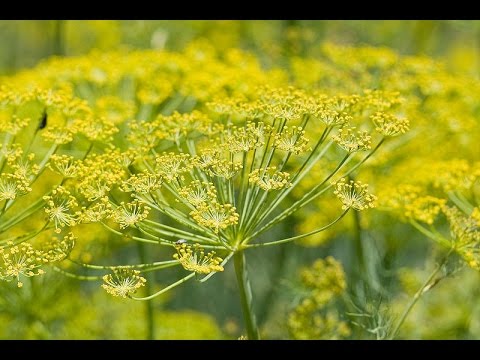

Watch this video on YouTube
Contraindications
Some people may have an individual intolerance to such a plant. It is recommended that people with epilepsy, pregnant women and diarrhea use fennel very carefully and in small doses. In addition, if a person is in poor health, then using this plant in too much can contribute to the development of bleeding.

